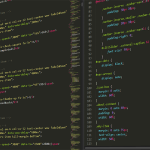As the world becomes increasingly interconnected through digital platforms, businesses must take proactive steps to engage with diverse audiences. One of the most effective ways to expand your reach is through multi-language website development. This blog will explore best practices for creating websites that are accessible to global audiences and highlight powerful tools like WPML and Weglot that facilitate seamless translations.
Why Multi-Language Websites Matter
Creating a multi-language website is not just a luxury; it’s essential for businesses aiming to grow internationally. Here are a few compelling reasons to invest in multi-language development:
-
Wider Audience Reach: By offering your website in multiple languages, you cater to a broader demographic, making it easier for users to access your content and services.
-
Improved User Experience: A website in a user’s native language enhances their experience, making them feel valued and understood.
-
Better SEO Performance: Multi-language SEO can significantly improve your website’s visibility in search engines, helping you to attract organic traffic from different regions.
- Increased Conversion Rates: Potential customers are more likely to engage and convert if they can interact with your website in their preferred language.
Best Practices for Multi-Language Website Development
1. Language Structure and Navigation
When building a multi-language website, it is crucial to have a clear structure. Here are some tips:
-
Subdirectories or Subdomains: Use subdirectories (example.com/es/) or subdomains (es.example.com) to maintain a clean URL structure. This approach is preferred by search engines and users alike.
- Language Selection: Implement an easy-to-find language selector on your homepage and ensure it’s consistently available across all pages.
2. Quality Translations
Avoid reliance on free translation services like Google Translate for critical content. Instead, invest in professional translation services or employ native speakers for accurate translations. Effective communication depends on precise language and cultural nuances.
3. Locale-Specific Content
Different regions might require different marketing approaches. Tailor your content to the cultural norms and preferences of each audience. This might include:
- Adjusting formats for dates, currencies, and measurements
- Localizing images and references to fit the target culture
- Ensuring that calls to action resonate with local audiences
4. SEO Considerations
Each language version of your content should be optimized individually. Here are key actions to take:
- Hreflang Tags: Implement hreflang tags to signal to search engines the language and regional targeting of your pages.
- Localized Keywords: Conduct keyword research for each language to ensure you’re targeting the right phrases that users search for within that language.
5. User Testing
After implementing your translations, conduct user testing with native speakers to gather feedback on usability, language accuracy, and overall experience. This step is crucial to identify any potential issues or cultural misunderstandings.
Tools for Seamless Translations
Creating a multi-language website does not have to be a daunting task. Several tools can simplify the process:
WPML (WordPress Multilingual Plugin)
WPML is one of the most popular solutions for multi-language WordPress websites. Key features include:
- Easy Setup: WPML offers an intuitive interface for managing translations and can be easily set up without technical expertise.
- String Translation: Translate themes, plugins, and other elements directly within the WPML interface.
- Compatibility: Works with the majority of WordPress themes and plugins, making it a versatile choice for developers.
Weglot
Weglot is another powerful translation tool that can help you create a multi-language website with minimal effort. Some notable features include:
- Quick Integration: Weglot can be integrated into any website in a matter of minutes, regardless of the platform.
- Automatic and Manual Translations: You can leverage automatic translations while having the ability to edit and refine them as necessary.
- SEO-Friendly: Weglot takes care of SEO elements like hreflang tags to ensure that your multi-language pages rank effectively.
Conclusion
Creating a multi-language website is an investment that can pay off significantly in terms of user engagement, brand loyalty, and conversion rates. By following best practices and utilizing powerful translation tools like WPML and Weglot, you can build a seamless online experience that resonates with diverse audiences. In the end, a well-executed multi-language strategy can pave the way for your business to thrive in the global marketplace.
For more insights into digital marketing and website development, stay tuned to our blog at [site-title]. Let’s embark on the journey to global reach together!




